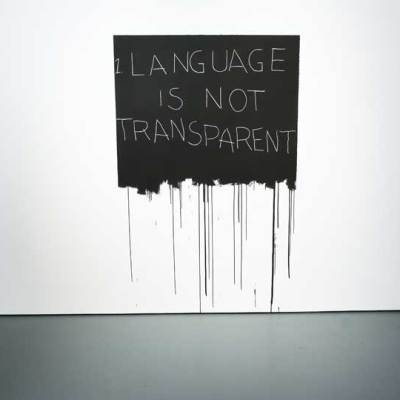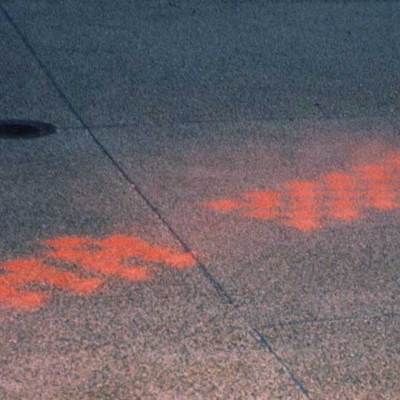I sometimes wonder whether the Barbican has always seemed anachronistic – whether at some moment between its completion and the present, it suddenly switched from being a dys/utopian vision of the future to looking a little…past it. Yet on reflection, the term ‘anachronism’ is jarring. For something to be anachronistic it needs to be associated with a particular time. The Barbican isn’t specifically in the wrong time – like a Louis XIV chest in a Klingon Destroyer – instead, it is of no time at all. It is the architectural version of seeing the 2-bit displays boot up in Alien; a stab at representing a future that is so blinkered by the present that it is unlikely come to pass. It is an achronism – belonging to a time that has never existed and will never exist.
It makes sense that the Barbican is currently hosting an exhibition dedicated to displaying and exploring the effects of digital technology on culture. The combination of the seemingly exponential progression of digital technology (according to Moore’s Law, computer processing power doubles every 18 months), and the diverse, global, and ephemeral culture to which it contributes has created a world in which everything now seems slightly out of time. Achronism isn’t just something we witness in old sci-fi films, but a feeling that bubbles up in ourselves from time to time. It is that sense that we were looking the wrong way during the latest developments in technology and culture, and have somehow been existing in an alternate present that runs parallel to the world in which everybody else has been living. It can be pretty disorienting.
Back in the Barbican, one of two things has happened. Either the building’s own achronism has magically cancelled out that of the digital devices and artworks that it is currently showing, or ‘Digital Revolution’ is an extremely well put together exhibition. The first section presents us with an ‘archaeology’ of early computers, consoles and synthesisers in a dark maze of glass cases and interactive displays. This part of the show could easily feel tired: many of the exhibits are things that you probably have access to at home. However, tight curation and the imaginative use of light, sound, vision and touch mean that it feels like a well woven argument which puts human creativity at the centre of the development of digital technology.
In subsequent sections of the exhibition, we’re shown the various ways that artists use code as a medium. Rafael Lozano-Hemmer’s The Year’s Midnight alludes to traditional images of St Lucy, patron saint of the blind, by presenting the viewer on a plasma display with plumes of smoke pouring from his or her eye sockets; Chris Milk’s The Treachery of Sanctuary draws on the rock art of the caves of Lascaux to evoke a sense of physical transcendence through interaction with a flock of digital birds; other works allow visitors to turn their wishes into butterflies, or play with laser generated ‘life-forms’ in a smoky subterranean room.
There is a religious theme here that initially seems strange (especially when you find yourself confronted with a giant, godlike animated bust of the musician will.i.am), but it fits. ‘Digital Revolution’ helps us to discern the creative and sublime in a material world that ostensibly runs on cold code and unbending categorisation. I left the show feeling both unexpectedly meditative and excited about the future of digital art, and about the future of art in a digital world.
‘Digital Revolution’ is at the Barbican Centre, London, until 14 September.
Related Articles
Art art installations the new video games? (Danielle Thom)
Augmented Reality Meets the Art World (Estella Shardlow)
Warhol’s Amiga Computer Artworks Uncovered After 30 Years (Estella Shardlow)
Saatchi Gallery and Google+ launch Motion Photography Prize (Camilla Apcar)
AGNES Goes Live at the Serpentine (Tom Overton)





